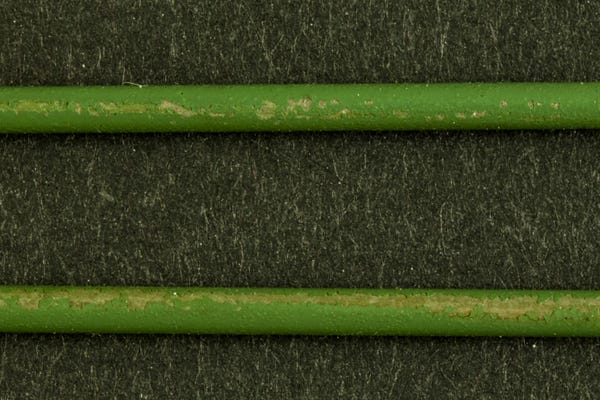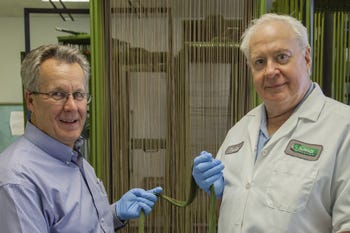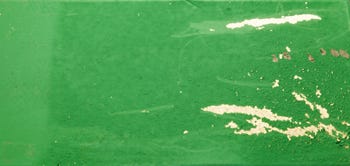September 24, 2014
The medtech industry appears have a flaking wires issue--and the main answer to it may involve more stringent fundamentals around a gold-standard coating substance that has lost some of its luster.
By Chris Newmarker
The importance of fundamentals is the main lesson that Chicago-based Surface Solutions Group has learned over the past year and a half as it tackled adhesion issues that have cropped up with polytetrafluoroethylene (PTFE).
PTFE used to not have such issues, but then the U.S. Environmental Protection Agency required that manufacturers eliminate the suspected carcinogen perfluorooctanoic acid (PFOA) from their PTFE formulations by 2015. (Dupont invented PTFE, naming it Teflon, but no longer promotes Teflon-branded PTFE coatings for medical device applications.)
The newer PTFE simply isn't sticking to stainless steel wires the way it used to, says Bruce Nesbitt, "chief tinkerologist" at Surface Solutions Group.
"You have to go to the fundamentals. What's causing the problem? Can we identify it? Can we do a pass/fail?" Nesbitt said.
|
Some failing wires experience PTFE delamination. (Image courtesy of Surface Solutions Group) |
The FDA over the past 12 months has announced Class I designations involving coated guidewire recalls at Medtronic and Medline.
On April 1, Covidien, issued a voluntary recall of 650 of its Pipeline embolization devices and Alligator retrieval devices after internal testing revealed coating delamination. It was just in August that the FDA approved changes to the manufacturing process for the PTFE coating on the Pipeline's delivery wire. (A Covidien spokesman declined to elaborate what the manufacturing changes were.)
"The ongoing quest for adhesion has been brought to the fore because of the massive recalls. And they're not necessarily ending," Nesbitt says.
Flaking can create a serious, life-threatening situation because dislodged coatings could become lodged in the lungs or the heart.
At the same time, the PTFE is still greatly desired at as a guidewire coating because it has such low friction while moving through blood vessels inside the human body.
"It has the lowest coefficient of friction of anything out there," says George Osterhout, president of Surface Solutions Group and its sister company Orion Industries.
|
George Osterhout, left, and Bruce Nesbitt, right (Image courtesy of Surface Solutions Group) |
Add resins to the formulation and the PTFE will better stick to the steel wire, but it won't be able to effortlessly glide through blood vessels, either.
"In the world there is no frying pan manufacturer that uses resin-bonded PTFE inside a frying pan. You cannot cook an egg inside a resin-bonded PTFE pan," Nesbitt says.
The situation is serious enough that large medtech manufacturers have been seeking leftover supplies of the old PTFE, even though it is being phased out, according to Nesbitt.
Major OEMs are shopping around more for new coatings companies, Nesbitt said. Surface Solutions Group has seen an uptick in business because of its proprietary coating processes that have tackled the flaking wire issues--with OEMs now willing to pay the more than $60,000 needed to qualify Surface Solutions Group as a supplier.
"There's an open door policy: show us what you can do and we will expedite a change order. It opened the door dramatically to secondary sources," Nesbitt said.
The company is expanding from a roughly 6,000-square-foot facility to 30,000 square feet.
"There has been a lot of work done by us internally here to find a solution and give our customers a quality part and reason they can sleep at night," Osterhout said.
Nesbitt and Osterhout didn't want to go into too much detail about the processes they've developed. But essentially, they involve new stringent surface preparation techniques and adjusting how the coating is applied.
Here are four of the areas they tackled:
1. Having Ultraclean Wires Before Coating
Guidewires at their smallest are two to three times the diameter of a human hair--their diameters mere thousandths of an inch. The wire manufacturers make them so small by drawing them through multiple dies as there are immersed in oil lubricants and heated and cooled multiple times, Nesbitt said.
The wire makers use degreasing and cleaning systems to clean the wires after they are drawn. But the cleaning simply isn't good enough anymore with the new PTFE formulation, Nesbitt said.
Still technically clean, contamination at the atomic level now matters.
"The removal of PFOA has made the PTFE more fragile, where any contamination at the atomic level can create a problem with adhesion," Nesbitt said. "So what you have to do is go back and look at everything and work to make sure that the coating is applied properly, that the part is ultraclean as we like we call it"
2. Making Wires Less Flat
Guidewires are coiled, and have generally been more flat to enable better maneuverability, Nesbitt said. "A flat wire looks like the wire on your phone."
PTFE, though, simply can't bond to sharp corners the way it used, too.
|
A test panel experiencing PTFE delamination. (Image courtesy of Surface Solutions Group) |
"We learned that only in the last couple of months, that there's a huge difference in the flat wire in the way it's cleanable versus the round wire," Nesbitt said.
The design challenge, then, is to have guidewires with less sharp corners that are still maneuverable.
"The sharp edges of the flat wire are the problem. You can't have a square corner when you have a flat wire--more than in the past. It doesn't wet out the surface as well, and when it cures there's a flaw in the sharp corners. In the past, we didn't have an issue," Nesbitt said.
3. More Strenuous Testing
"And then we have to do the testing after to make sure we verify that the product has no contamination on it between the coating and the substrate," Nesbitt said.
Medical device manufacturers are starting to require saline soak testing performed at coating facilities, after reports of "green flakes" in an operating room when PTFE coated guidewires were immersed in a saline soak tank prior to an intravascular procedure. The PTFE coating process, in the past, may have been less sensitive to saline, but not anymore.
The normal saline test for most of the industry is 30 minutes at room temperature. Surface Solutions Group has moved to 120 degrees.
"We're overtesting," Nesbitt said.
"We raised the temperature to protect ourselves to make sure we cover the bases," Osterhout said. Any of the samples taken from a lot for testing are not sold to customers.
4. The Need for Thinner Coating
The old coating thickness requirements were .0003 to .0005 inch on a surface. But Nesbitt says thinner PTFE coatings--even nano thicknesses of 50 to 100 nm, up to about .0002 inch--are showing greater adhesion to the substrate.
"We're learning that there's a direct absolute correlation between how thick the PTFE coating is and adhesion. ... If they have the opportunity to go to the thin side, they see better saline test results," Nesbitt said.
It is still unclear why exactly thinner is better. But Nesbitt suspects anyone who has had to shovel snow off a sidewalk might have a guess: the thicker the snow, the more the weight of the snow enables a much cleaner separation from the sidewalk, with no snow able to stick. Thicker PTFE may not stick as well either.
"The theory is that the adhesion of the coating to itself is not as strong as the adhesion of the PTFE to the substrate. This bears out in actuality and testing. After all, only the outer molecule provide the low friction," Nesbitt said.
Surface Solutions Group and others may be raising the alarm. But at it's heart, the new formulation of PTFE might simply be another challenge that wire and coatings companies need to work through--and it's a matter of having the required expertise and experience to adjust, according to Liddon Dell, who is an applications specialist at Sandvik Materials Technology's Palm Coast, FL location.
"It's always been a function of the process the material has been put through. ... It's all a function of what the customer wants, how do you provide them a product they want," Dell said.
What Surface Solutions Group is doing makes sense, says Stephen Spiegelberg, president of Cambridge Polymer Group in Boston.
"If you have a flaking issue, particularly one that hadn't been there previously, it's usually the result of a work surface that is not perfectly clean or as clean as it needs to be, or as well prepared as it needs to be," Spiegelberg says.
The new formulation of PTFE is causing an issue around "operational qualification" involving the flexibility one can have in a manufacturing process, according to Spiegelberg. "The operational qualification is an important step. That takes time and money to do that. But it's really important to do that at the end of the day."
See Spiegelberg discuss failure analysis of medical plastics on Thursday, October 16, at MD&M Chicago. |
Chris Newmarker is senior editor of Qmed and MPMN. Follow him on Twitter at @newmarker.
Like what you're reading? Subscribe to our daily e-newsletter.
About the Author(s)
You May Also Like





